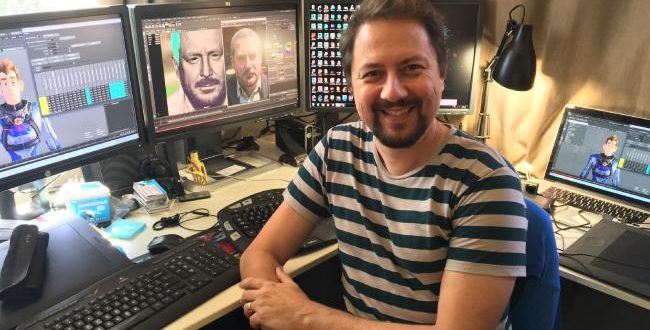Industry figures have challenged the perception that the virtual reality craze is starting to cool down after a big 2016.
According to David Liu, creative director at Viacom NEXT and Autodesk Australia’s David Zwierzchaczewski, an animation specialist, matching last year’s excitement was always going to be hard but there’s plenty happening behind the scene.
With three major VR ecosystems: Oculus Rift, HTC Vive and Sony PlayStation VR making an appearance in 2016, this year has been about delivering critical improvements.
“The thing is there’s a lots happening under the hood,” Mr Zwierzchaczewski said. “For example HTC just announced an add-on for the Vive, which will do eye tracking, an absolutely crucial part of the VR experience.”
Meanwhile, Mr Lui said Facebook’s Spaces Beta would be a launching point into VR for many. Users with Oculus Rift headsets can message each other and appear together in the virtual world.
He said VR headsets one day would be “as common as a smartphone”. He predicted the convergence of virtual and augmented reality into one realm and pointed to huge investments in it by the world’s major tech companies as indicating eventual success.
“Once people share experiences with their friends, often thousands of miles away, it will provide a new digital space for them to do work and to play, I think that’s when it will start taking off,” Mr Lui said.
Both speakers shared their views at last week’s Convergence VR event in Sydney.
According to Mr Zwierzchaczewski, eye tracking will be a game changer in 2017. Headsets will glean where you are looking. The area directly in front will display in high resolution and peripheral areas in lower resolution to save bandwidth. That will make headset-to-headset communication more viable.
Self-tracking headsets represented another advance in 2017. Inside-out tracking should end the need for external tracking systems, making high-end VR experiences more accessible at home.
He said VR was already extensively used in the preview and design phases of film production.
Producers and directors were using VR and 3D to communicate their intended final shots to crews. They could build intended scenes in VR, whether it is Mars, or a historical setting that did not exist, and walk around in VR and decide the location of shots before final scenes were built.
The financially lucrative areas for VR were the civil professions, such as drafting and architecture, manufacturing and defence. He had given numerous talks on VR to these professions, rather than to media creators.
“These industries are hungry for it,” Mr Zwierzchaczewski said.
Education, medicine, museums and art galleries would be obvious adopters of VR and he cited the example of donning a VR headset and getting up close to the Mona Lisa, so you could see the brushstrokes.
You could not get that close to the Mona Lisa at the Louvre Museum in Paris.
Mr Zwierzchaczewski spends much of his time visiting studios where he demonstrates new VR features, and software that creates it.
The other ingredient was “$1000 stand-alone headsets that have positional tracking”, according to Mr Lui.
“Right now there’s a lot of focus on VR as an entertainment device, but that alone will not bring scale,” he said.
Instead, Mr Lui is hoping that the technology can become a canvas for all-new experiences.
“We’re projecting a lot of tired mediums into virtual reality when we should be just making virtual reality as virtual reality — it’s its own medium on its own platform,” he said.
“We shouldn’t be trying to make films in virtual reality, we shouldn’t be trying to make games at virtual reality; we should be making experiences in virtual reality.”
Reader comments on this site are moderated before publication to promote lively and civil debate. We encourage your comments but submitting one does not guarantee publication. We publish hundreds of comments daily, and if a comment is rejected it is likely because it does not meet with our comment guidelines, which you can read here. No correspondence will be entered into if a comment is declined.





